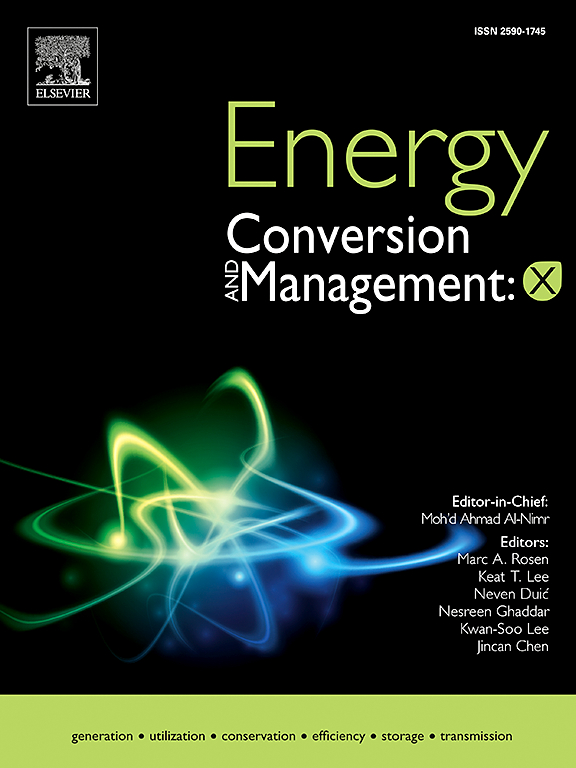综述:优化充电基础设施以支持电动汽车的广泛采用
IF 7.6
Q1 ENERGY & FUELS
引用次数: 0
摘要
由于各种原因,电动汽车(ev)越来越受欢迎,比如更低的价格以及更强的环境和气候意识。更具体地说,对电动汽车的前景和全球市场情景进行了评估。许多国家正在加速采用电动汽车,以尽量减少环境恶化和对石油的依赖。电动汽车,特别是纯电动汽车(BEV)的引入,被视为解决能源问题和环境问题的一种补救措施。本文全面介绍了电动汽车的技术演变和支持其采用的技术。综述了电机、控制、电池、充电技术和电动汽车控制与充电基础设施(CI)等关键技术。这是一项综述性研究,重点研究了这方面的一些关键技术,包括智能充电、车辆到电网(V2G)、使用光伏板(PV)的电动汽车充电和电动汽车道路充电。电动汽车智能充电旨在提高电动汽车和可再生能源的普及率,降低充电成本,提高电网基础设施的利用率。本研究还探讨了提高电动汽车安全性、可靠性和效率的技术问题和技术。研究发现,关键技术对电动汽车的可持续性和可靠性起着至关重要的作用。研究表明,电动汽车最大的缺点是自主性。电动汽车的充电基础设施对于实现向电动汽车的平稳过渡至关重要。为了促进电气化交通的使用,必须在方便用户的环境中建立一个广泛的充电站网络和电力管理系统。本文章由计算机程序翻译,如有差异,请以英文原文为准。
A Review: Charging infrastructure optimisation to support widespread adoption of electric vehicles
Electric vehicles (EVs) have gained popularity because of a variety of reasons, such as lower prices and more environmental and climate awareness. More specifically, an evaluation of the prospects and global market scenario for EVs is done. Many countries are accelerating the adoption of EVs to minimise environmental degradation and reliance on oil. The introduction of EVs, specifically battery electric vehicle (BEV), is viewed as a remedy to the energy problem and environmental concerns. This article presents a thorough examination of the technical evolution of EVs and technologies to support their adoption. The key technologies for electric motors, control, batteries, charging technology and EV control and charging infrastructure (CI) are summarised. This is a review study that focuses on certain key technologies in this regard, including smart charging, vehicle-to-grid (V2G), EV charging using photovoltaic panels (PV) and EV on-road charging. Smart charging of EVs is intended to increase EV and renewable energy penetration, reduce charging costs and improve grid infrastructure utilisation. This study also discusses technological problems and technologies to improve the safety, reliability and efficiency of EVs. The study found that the key technologies play vital roles in EV sustainability and reliability. The studies revealed that the most significant drawback of EVs is their autonomy. Charging infrastructure for electric vehicles is critical for enabling a smooth transition to e-mobility. To promote the use of electrified transportation, an extensive network of charging stations and power management systems must be built in a user-friendly setting.
求助全文
通过发布文献求助,成功后即可免费获取论文全文。
去求助
来源期刊

Energy Conversion and Management-X
Multiple-
CiteScore
8.80
自引率
3.20%
发文量
180
审稿时长
58 days
期刊介绍:
Energy Conversion and Management: X is the open access extension of the reputable journal Energy Conversion and Management, serving as a platform for interdisciplinary research on a wide array of critical energy subjects. The journal is dedicated to publishing original contributions and in-depth technical review articles that present groundbreaking research on topics spanning energy generation, utilization, conversion, storage, transmission, conservation, management, and sustainability.
The scope of Energy Conversion and Management: X encompasses various forms of energy, including mechanical, thermal, nuclear, chemical, electromagnetic, magnetic, and electric energy. It addresses all known energy resources, highlighting both conventional sources like fossil fuels and nuclear power, as well as renewable resources such as solar, biomass, hydro, wind, geothermal, and ocean energy.
 求助内容:
求助内容: 应助结果提醒方式:
应助结果提醒方式:


